Nokia, the renowned phone maker and market leader at one time announced its
**re-entry in the smartphone market** last year with the launch of Nokia 3, 5 and the revamped
**Nokia 3310** at MWC 2017. This was a bittersweet moment for most of us considering that this officially marked the return of Nokia-branded smartphones after the company gradually faded into irrelevance post the Microsoft acquisition. HMD Global has made Nokia sexy again. [caption id=“attachment_4324567” align=“alignleft” width=“380”] Nokia 8. Image: Tech2/Rehan Hooda[/caption] HMD Global, after launching Nokia 8 last year, also claimed that it will roll out faster updates than the competition and will focus on the quality of experience. So instead of going for the usual week-long review, I decided to wait and pen a long-term review. I used the device as my regular driver for about 3 months to see if the Nokia promise held. I really wanted to test and check how the device would perform in the long run. This is considering the fact that my first feature phone and smartphone in the era of Symbian Anna were from Nokia. I gradually moved away from my first smartphone,
**Nokia 808 Pureview** to my first Android-equipped flagship, the OnePlus One. Nokia 8 is a stellar device and it almost checks all the right boxes for the first Nokia-branded flagship. But here is the thing, ‘almost’. HMD should be proud of what they made created in terms of build quality and software update cycle for an Android-based device. But the ‘almost’ part is problematic as the areas with issues are massive. To know what those massive issues are, let’s dive into the detailed Nokia 8 review. Build and Design: 7/10 Right out of the box, Nokia 8 does not hide the fact that it is here for business. It sports a premium metal unibody design which screams quality when you first hold it in your hand. There are no loose, squeaking parts and everything in terms of material tells you that HMD Global is going all in when it comes to a flagship device. [caption id=“attachment_4324541” align=“alignnone” width=“1280”]
Image: Tech2/Rehan Hooda[/caption] HMD Global wants to bring back the familiar ‘strong and rugged devices’ notion that old Nokia devices were famous for. As far as the build quality is concerned, there are no half measures. Users will find the home button with an embedded fingerprint scanner on the front of the device along with touch-sensitive navigation buttons towards the bottom of the device. [caption id=“attachment_4324557” align=“alignnone” width=“1280”]
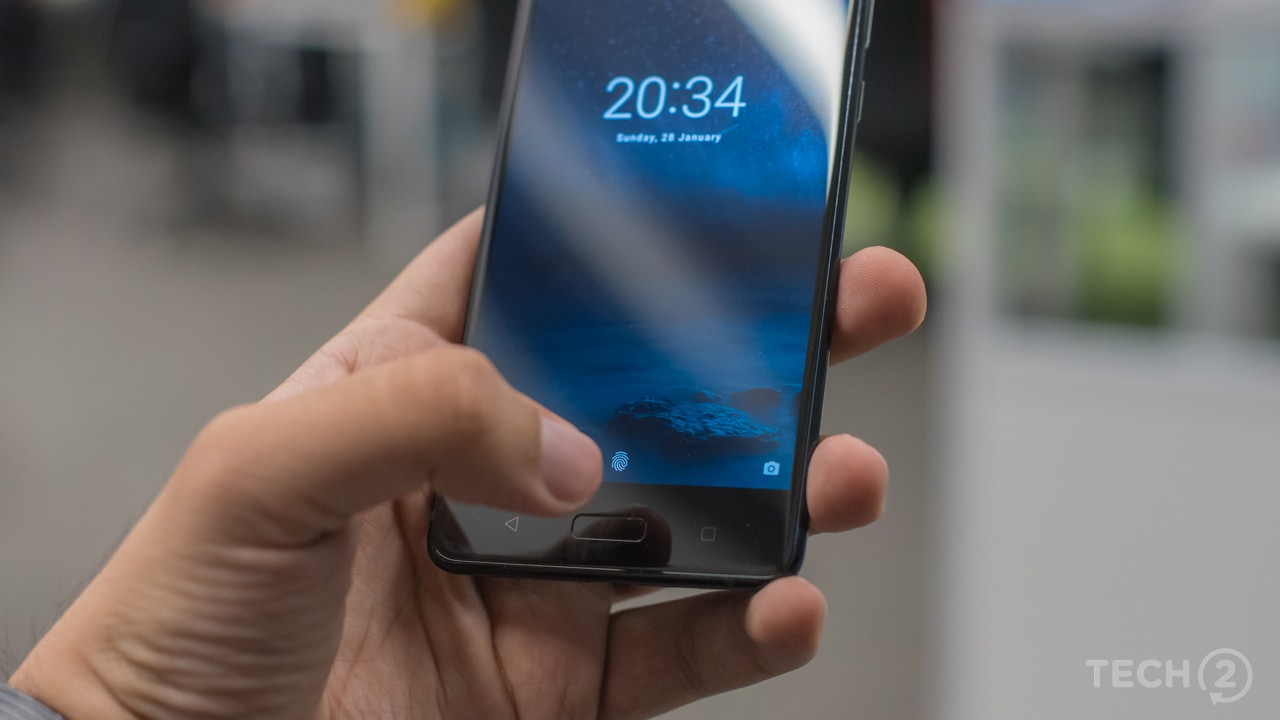 Image: Tech2/Rehan Hooda[/caption] The buttons come with navigation labels, which means that they cannot be customised. It is worth noting that the body in addition to the display on the front is a fingerprint magnet as I found myself more focused on wiping away the smudges from the most mundane of actions. The fingerprint scanner is responsive and working without issue but I think that HMD should have done something different when it came to the shape of the button. There is a ‘Nokia’ label on the top right side of the front of the design along with the front camera sensor on the top left side and a speaker grill in the middle. [caption id=“attachment_4324539” align=“alignnone” width=“1280”]
Image: Tech2/Rehan Hooda[/caption] The buttons come with navigation labels, which means that they cannot be customised. It is worth noting that the body in addition to the display on the front is a fingerprint magnet as I found myself more focused on wiping away the smudges from the most mundane of actions. The fingerprint scanner is responsive and working without issue but I think that HMD should have done something different when it came to the shape of the button. There is a ‘Nokia’ label on the top right side of the front of the design along with the front camera sensor on the top left side and a speaker grill in the middle. [caption id=“attachment_4324539” align=“alignnone” width=“1280”]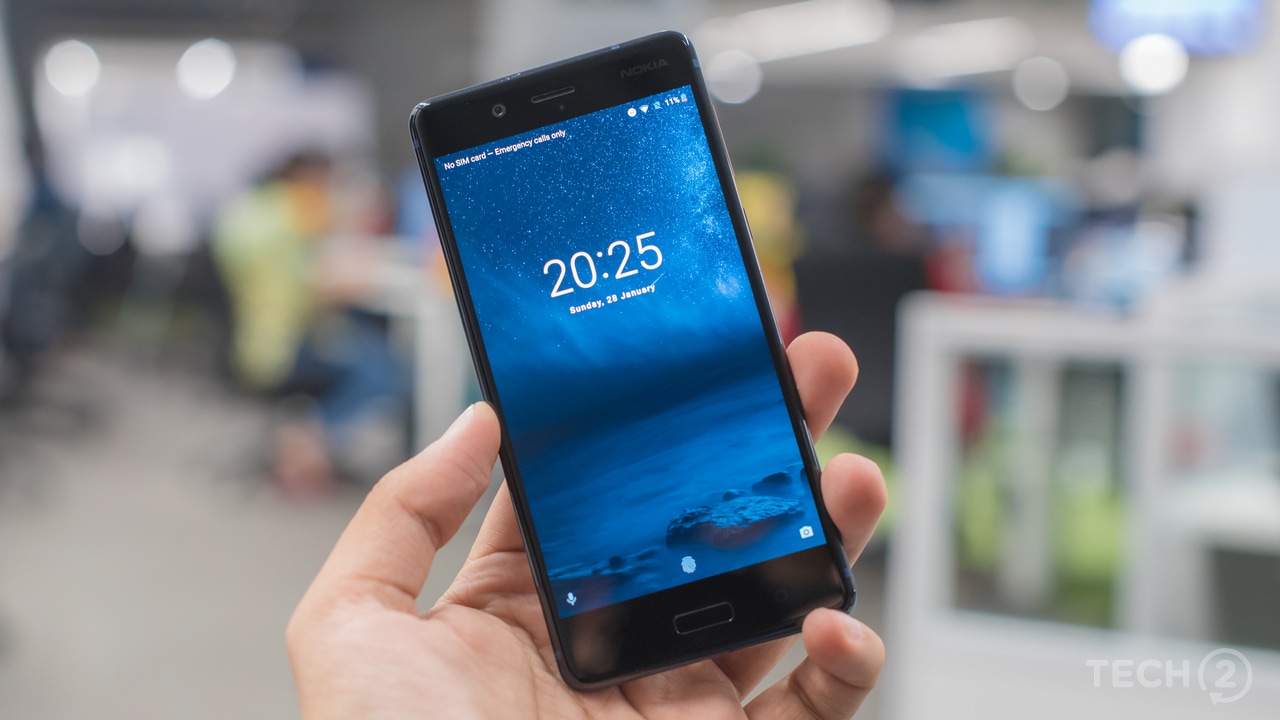 Image: Tech2/Rehan Hooda[/caption] HMD has packed the Type-C USB port on the base of the device with a microphone on the left and speaker grill on the right side. Moving towards the sides, the volume rocker and the power button on the device are located on the right of the device while the SIM tray is located on the left side of the device. [caption id=“attachment_4324543” align=“alignnone” width=“1280”]
Image: Tech2/Rehan Hooda[/caption] HMD has packed the Type-C USB port on the base of the device with a microphone on the left and speaker grill on the right side. Moving towards the sides, the volume rocker and the power button on the device are located on the right of the device while the SIM tray is located on the left side of the device. [caption id=“attachment_4324543” align=“alignnone” width=“1280”]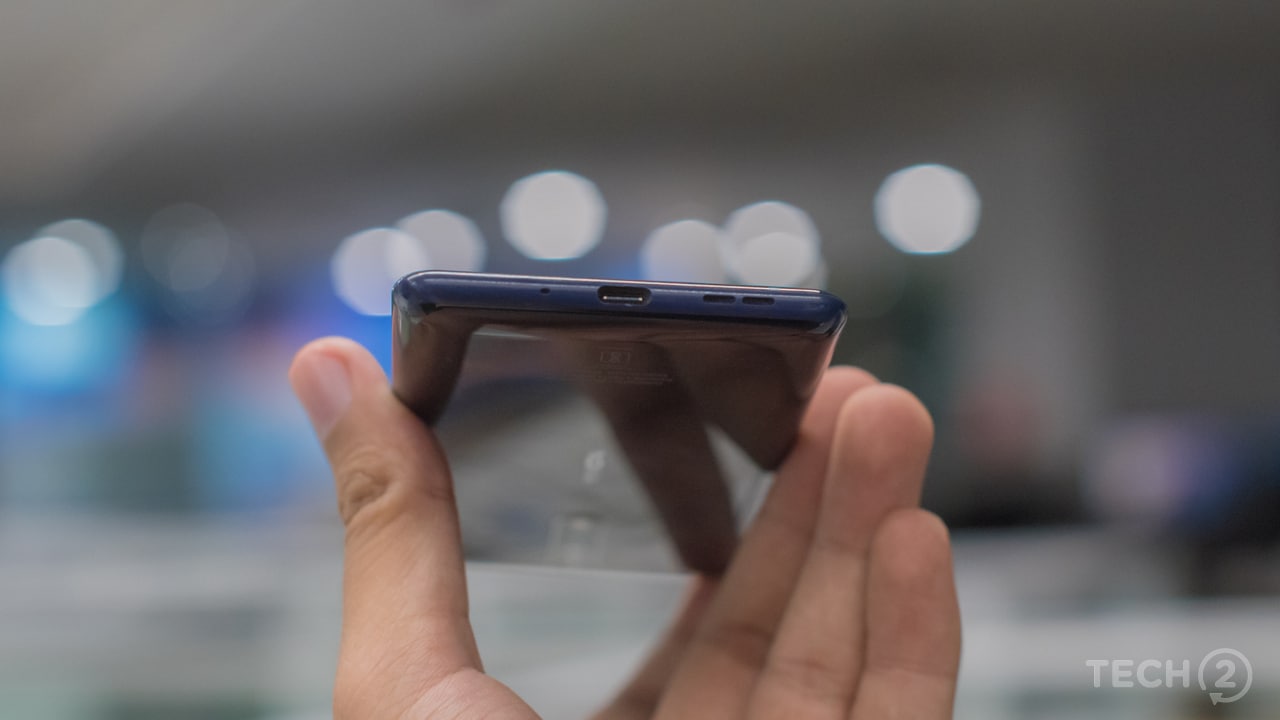 Image: Tech2/Rehan Hooda[/caption] Thankfully, the company did not ditch the 3.5 mm headphone jack and it is located on the top of the smartphone. The dual camera sensors with ‘ZEISS’ logo branding are located towards the top middle part in a vertical setup at the back of the device in addition to the dual-LED dual-tone flash and the laser autofocus module right below the ‘ZESS’ logo. The camera module is almost flush with the rear side of the phone which is thoughtful. [caption id=“attachment_4324555” align=“alignnone” width=“1280”]
Image: Tech2/Rehan Hooda[/caption] Thankfully, the company did not ditch the 3.5 mm headphone jack and it is located on the top of the smartphone. The dual camera sensors with ‘ZEISS’ logo branding are located towards the top middle part in a vertical setup at the back of the device in addition to the dual-LED dual-tone flash and the laser autofocus module right below the ‘ZESS’ logo. The camera module is almost flush with the rear side of the phone which is thoughtful. [caption id=“attachment_4324555” align=“alignnone” width=“1280”]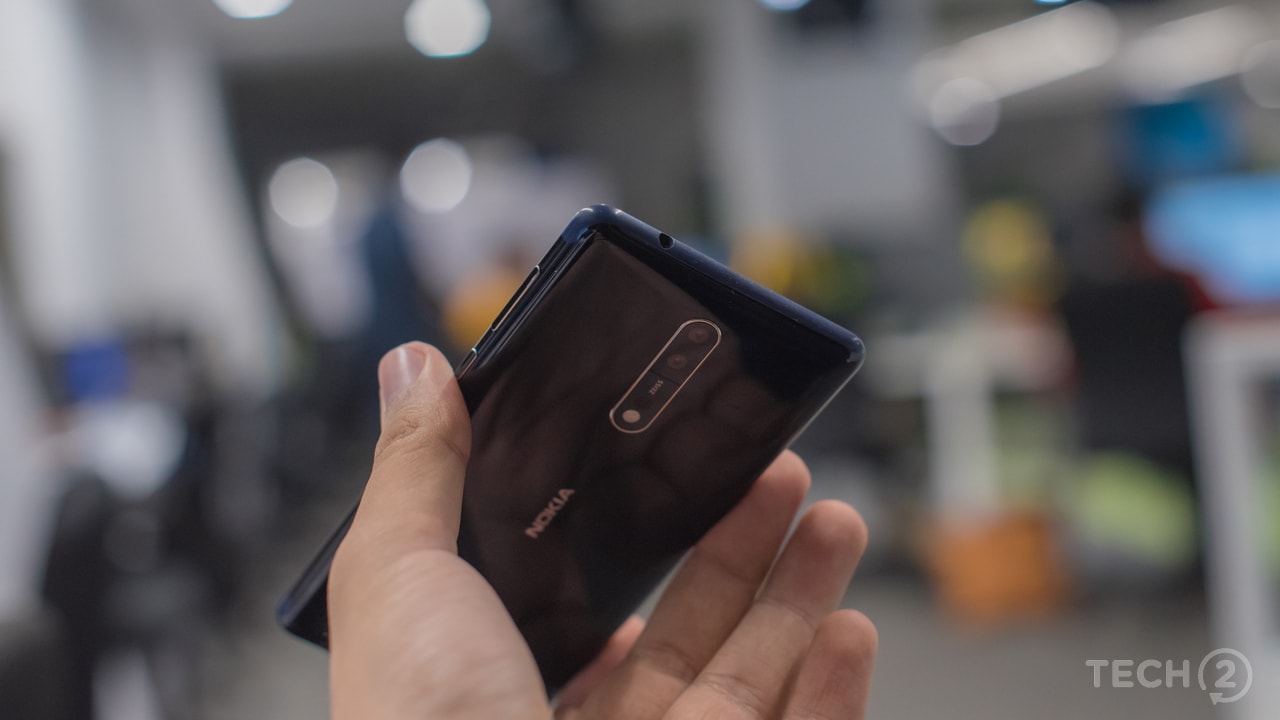 Image: Tech2/Rehan Hooda[/caption] [caption id=“attachment_4324563” align=“alignnone” width=“1280”]
Image: Tech2/Rehan Hooda[/caption] [caption id=“attachment_4324563” align=“alignnone” width=“1280”]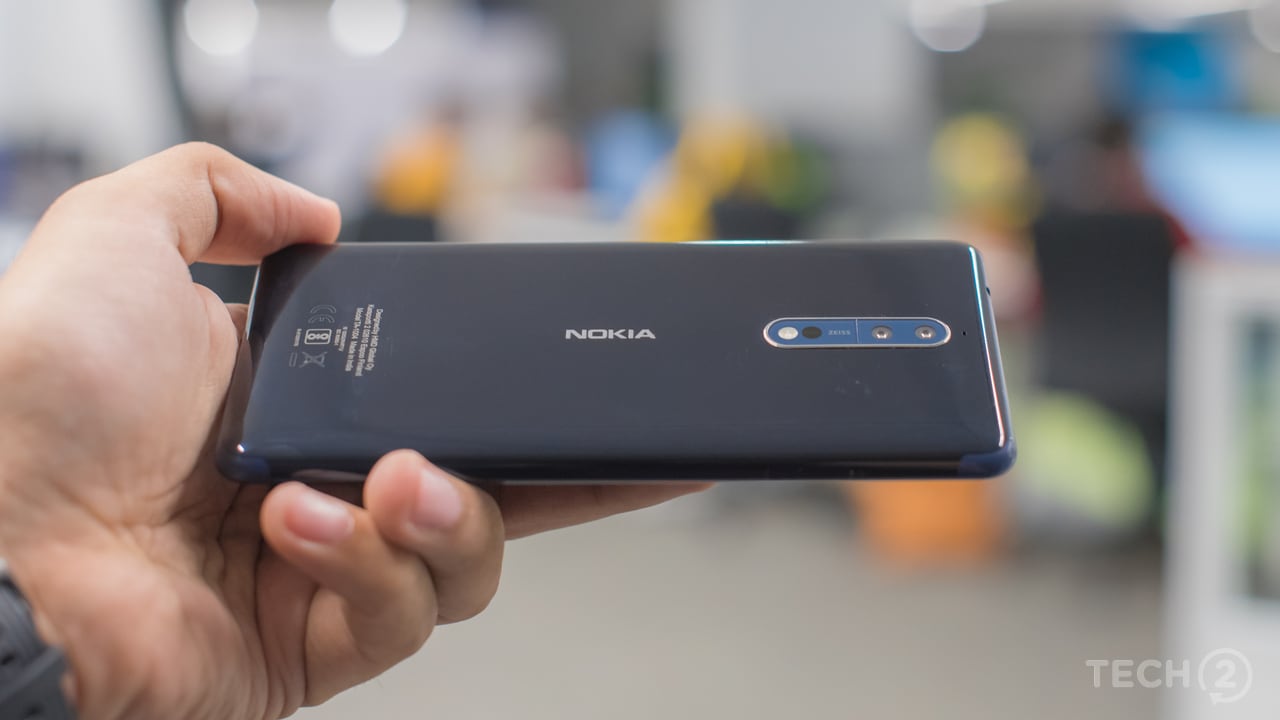 Image: Tech2/Rehan Hooda[/caption] The last thing to add before we move on to the next section, the unit provided to us was a used one and it came with some scratches on the metal back. During my extended usage, I did not inflict any scratches on the device as I handle all the devices with extreme care. But considering the condition of the device, I would advise users to invest in a case or cover for their Nokia 8 if they are not cautious by nature. [caption id=“attachment_4324547” align=“alignnone” width=“1280”]
Image: Tech2/Rehan Hooda[/caption] The last thing to add before we move on to the next section, the unit provided to us was a used one and it came with some scratches on the metal back. During my extended usage, I did not inflict any scratches on the device as I handle all the devices with extreme care. But considering the condition of the device, I would advise users to invest in a case or cover for their Nokia 8 if they are not cautious by nature. [caption id=“attachment_4324547” align=“alignnone” width=“1280”]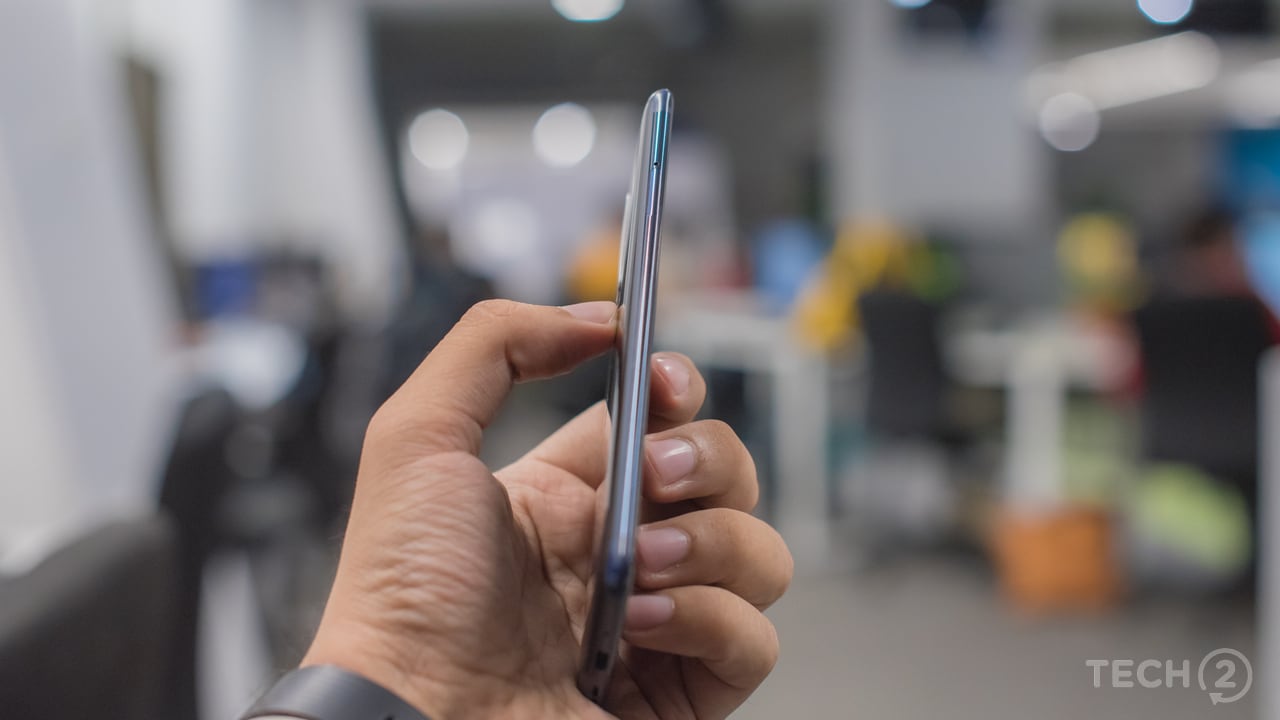 Image: Tech2/Rehan Hooda[/caption] [caption id=“attachment_4324545” align=“alignnone” width=“1280”]
Image: Tech2/Rehan Hooda[/caption] [caption id=“attachment_4324545” align=“alignnone” width=“1280”]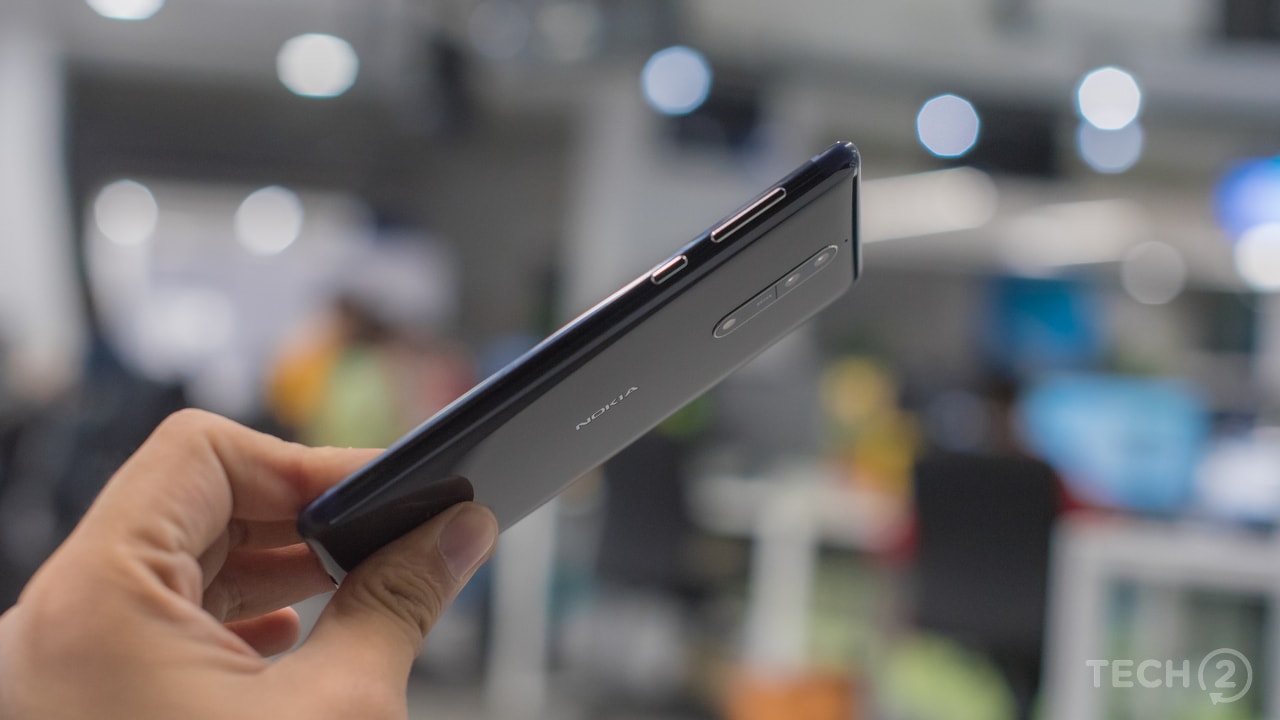 Image: Tech2/Rehan Hooda[/caption] Features: 7.5/10 Nokia 8 comes with decent features and internal specifications that classify the device as a flagship. It is powered by Qualcomm’s current flagship SoC, Snapdragon 835, which has an octa-core CPU. It comes with a 5.3-inch QHD display with 16:9 aspect ratio. In addition to Snapdragon 835, Nokia 8 comes in two variants, the higher one with 6 GB RAM and 128 GB internal storage and the base variant with 4 GB RAM and 64 GB internal storage. Users can add a microSD card to the mix with up to 256 GB capacity to increase the storage of the device. The microSD card uses the second SIM slot. [caption id=“attachment_4324553” align=“alignnone” width=“1280”]
Image: Tech2/Rehan Hooda[/caption] Features: 7.5/10 Nokia 8 comes with decent features and internal specifications that classify the device as a flagship. It is powered by Qualcomm’s current flagship SoC, Snapdragon 835, which has an octa-core CPU. It comes with a 5.3-inch QHD display with 16:9 aspect ratio. In addition to Snapdragon 835, Nokia 8 comes in two variants, the higher one with 6 GB RAM and 128 GB internal storage and the base variant with 4 GB RAM and 64 GB internal storage. Users can add a microSD card to the mix with up to 256 GB capacity to increase the storage of the device. The microSD card uses the second SIM slot. [caption id=“attachment_4324553” align=“alignnone” width=“1280”]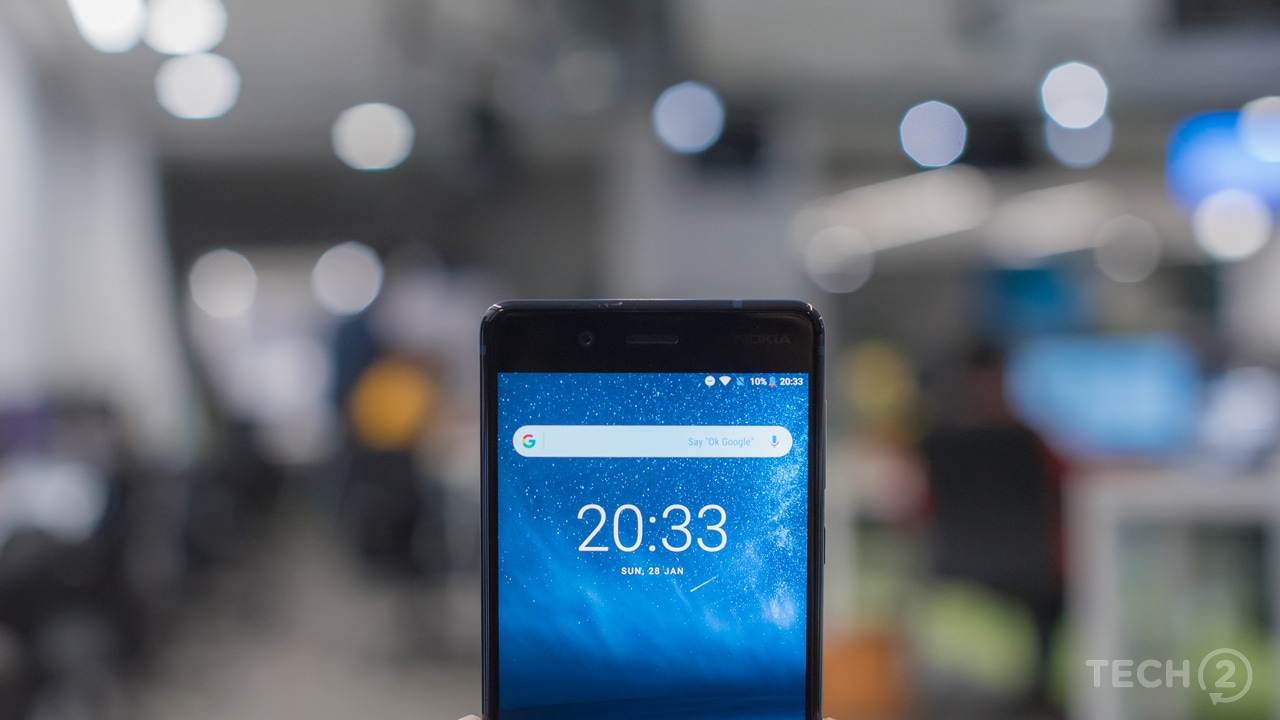 Image: Tech2/Rehan Hooda[/caption] The flagship chipset is paired with Adreno 540 GPU for graphics-intensive tasks. Nokia 8 came with Android 7.1.1 Nougat out of the box and later HMD Global was one of the few companies to upgrade their
**device to Android 8.0 Oreo** . The company has already
**started the beta test for Android 8.1 Oreo** . Moving to the camera, HMD Global has partnered with Carl Zeiss, the famous German company that specialises in optical instruments to design the dual camera setup of the device. It packs two camera sensors with 13 MP resolution. It also allows users to shoot video in 4K resolution. The front camera also comes with camera sensor with 13 MP resolution and 4K video recording capabilities and phase detection autofocus. [caption id=“attachment_4324565” align=“alignnone” width=“1280”]
Image: Tech2/Rehan Hooda[/caption] The flagship chipset is paired with Adreno 540 GPU for graphics-intensive tasks. Nokia 8 came with Android 7.1.1 Nougat out of the box and later HMD Global was one of the few companies to upgrade their
**device to Android 8.0 Oreo** . The company has already
**started the beta test for Android 8.1 Oreo** . Moving to the camera, HMD Global has partnered with Carl Zeiss, the famous German company that specialises in optical instruments to design the dual camera setup of the device. It packs two camera sensors with 13 MP resolution. It also allows users to shoot video in 4K resolution. The front camera also comes with camera sensor with 13 MP resolution and 4K video recording capabilities and phase detection autofocus. [caption id=“attachment_4324565” align=“alignnone” width=“1280”] Image: Tech2/Rehan Hooda[/caption] HMD offers 4G-enabled hybrid dual SIM slots, Wi-Fi 802.11 a/b/g/n/ac, dual-band, Wi-Fi Direct, hotspot, Bluetooth v5.0 with A2DP and LE, NFC, USB 3.1 with Type-C connector, and 3.5-mm headphone jack as connectivity options. The device comes with front-mounted fingerprint, accelerometer, gyroscope, proximity, compass and barometer sensors. Last but not the least, it packs a 3,090 mAh lithium-ion battery and comes in ‘Polished Blue’, ‘Steel’, ‘Polished Copper’, and ‘Tempered Blue’ colours. Display: 8/10 Nokia 8 comes with a 5.3-inch QHD screen with IPS LCD panel and Corning Gorilla Glass 5 to protect the screen against accidental scratches. It comes with a 16:9 aspect ratio instead of 18:9. With 1440x2560 resolution, the screen boasts an impressive 554 PPI pixel density. The design of the device does not include the ‘near bezel-less’ form factor that newer devices come with. The colour rendering, sharpness, and brightness of the display is spot on without any problems. The screen is reflective but the brightness manages to beat it in day-to-day usage. However, you may want to find a spot with shade while trying to operate the phone in direct sunlight. [caption id=“attachment_4324551” align=“alignnone” width=“1280”]
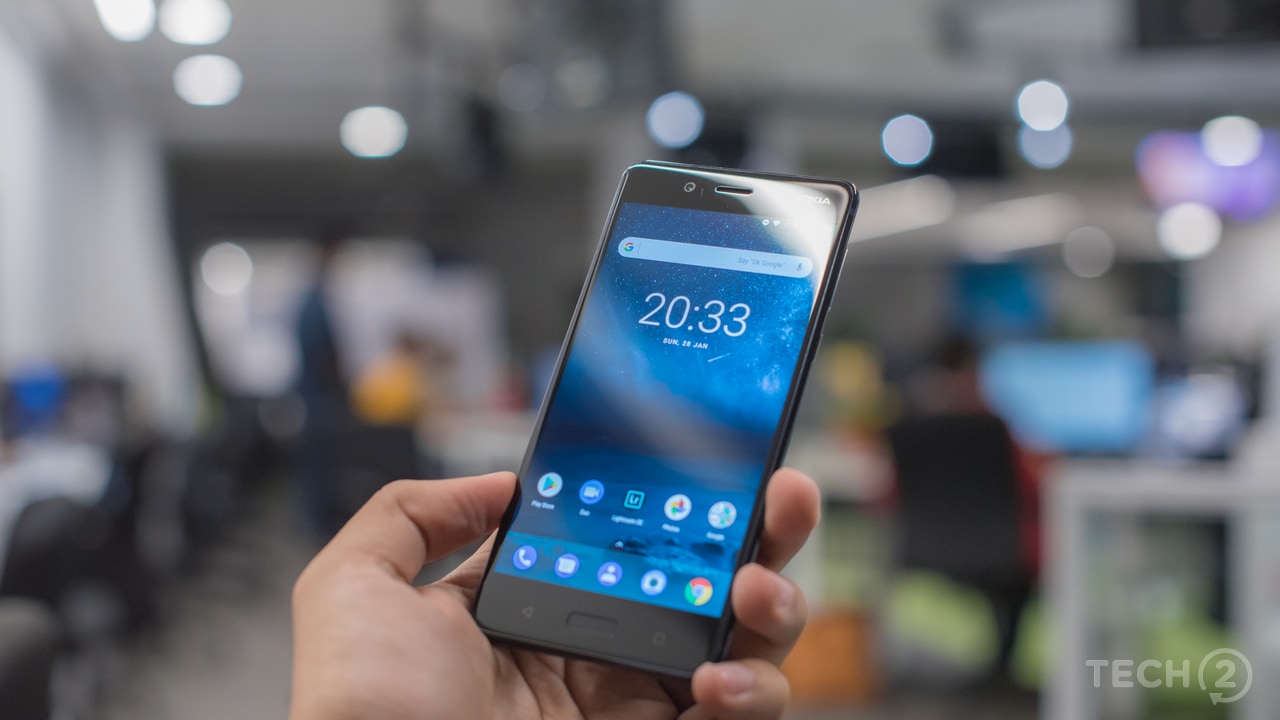 Image: Tech2/Rehan Hooda[/caption] The brightness levels do take a hit as soon as you move the device off from its axis to view it from an angle but the colours don’t take such a drastic hit. As pointed out in the Build and Design section, the display is a fingerprint magnet so it is likely that you will spend a considerable amount of time wiping the screen to keep it clean. Other than that, it was hard to find any problems with the display. Software: 8.5/10 HMD Global mentioned how they will pay extra attention to the software side of things while launching Nokia devices at MWC 2017 last year. Almost a year later, I believe that they have backed their words with action by being one of the fastest to roll out Android OS upgrades, as well as monthly security patches apart from Google itself.
Image: Tech2/Rehan Hooda[/caption] The brightness levels do take a hit as soon as you move the device off from its axis to view it from an angle but the colours don’t take such a drastic hit. As pointed out in the Build and Design section, the display is a fingerprint magnet so it is likely that you will spend a considerable amount of time wiping the screen to keep it clean. Other than that, it was hard to find any problems with the display. Software: 8.5/10 HMD Global mentioned how they will pay extra attention to the software side of things while launching Nokia devices at MWC 2017 last year. Almost a year later, I believe that they have backed their words with action by being one of the fastest to roll out Android OS upgrades, as well as monthly security patches apart from Google itself.
I don’t really remember any other device where I was getting monthly updates that ensured that the experience was a breeze. Apart from that, as stated above, Nokia launched with Android 7.1.1 Nougat and was upgraded to Android 8.0 Oreo and the company has already started **testing Android 8.1 Oreo** .
Moving towards the actual software experience, the device provides almost stock Android-like experience and it is delightful to notice how small tweaks to the icons in addition to apps added by HMD Global, such as ‘Support’, ‘Files’, and ‘Camera’ go along with the default theme and don’t stand out to break the overall aesthetic.
The system comes with almost no bloatware and the only app that I could notice was the ‘Support’ app. This is quite well designed, is not an over the top web-wrapper app. The app informs users about their ‘Warranty status’, ‘Nearest care center’, and a ‘Device monitor’ where users can keep a tab on the memory, data and storage use, signal strength in addition to keeping a track on device temperature and the health of the battery.
The app also comes with an entire ‘User guide’ for the device along with ‘Frequently asked questions’, ‘Support chat’ to quickly chat with support for any issues that one may be facing and a link to the ‘Community forums’. Apart from that, the software is zippy and I did not encounter any lags, issues, system or app crashes during the three month period of using the device.
Unlike other reviews in past, the software here is minimal, to the point, and just works without any hassle. Regular updates to bring it on par with Google’s Pixel lineup is a cherry on the cake. Performance: 8/10 HMD Global’s Nokia 8 performs without any hiccups, slowdowns or crashes. Considering that Nokia 8 is powered by Qualcomm’s current flagship SoC, Snapdragon 835 with Octa-core CPU where four cores are clocked at up to 2.46 GHz for higher performance and remaining four cores are clocked at 1.9 GHz for efficient performance, it ran smoothly through my intensive day-to-day usage without breaking a sweat.
I did not experience any freezing or stuttering except maybe once or twice in three months where a third party app crashed on the first occasion and a game crashed on the second occasion when I was pushing the device to its limits with intensive 2-hour long gaming sessions. Nokia 8 had no issues running heavy games like Gear.Club, Real Racing 3, Need for Speed No Limits, Breakneck, Modern Combat 5 or Dead Trigger 2. However, it did heat up during the intensive sessions, but the heat was evenly distributed on the rear side instead of being concentrated in one spot. It is likely because of the heat sink that HMD was talking about. The device was also relatively quick to cool down because of the metal back. There were no problems while making internet or cellular calls with the device as the connectivity and voice clarity were spot on. Camera: 6.5/10 Nokia devices have long been synonymous with great camera sensors and equally stellar image quality. However, coming to this section of the review, I don’t feel particularly happy to say that the camera quality of the Nokia 8 is lacking. When I first got my hands on the device, I anxiously opened the camera app to check how the images would turn out but to my surprise, they were bad. [caption id=“attachment_4324559” align=“alignnone” width=“1280”] Image: Tech2/Rehan Hooda[/caption] Before diving in the image quality, I would like to mention the hardware to prove that it does not look as bad on the paper. The dual camera setup of the device packs two camera sensors with 13 MP resolution, f/2.0 aperture, phase detection, laser autofocus, optical image stabilisation (OIS) and dual-LED dual-tone flash. It also allows users to shoot video in 4K resolution at 30 fps. The front camera also comes with camera sensor with 13 MP resolution with f/2.0 aperture, 4K video recording capabilities and phase detection autofocus. What is surprising is the fact that HDM Global has also added a Zeiss branding on the camera module. But in all honesty, it does not help the images. Initially, I thought that there must be a software update in the works to improve the quality, but weeks into the testing, I realised that it is what it is. As long as there is abundant lighting, the images show details. But the moment you get indoors, the details start dropping. Images shot at night are a just sad mess of noise and grain with nothing to look forward to.
Image quality is not the only thing that is problematic here, as the camera software is also problematic and could be helped with several tweaks. One of the major problems that I had with the camera software was the unoptimised UI design. How is it that one needs to tap on two buttons to switch from the back camera to the front and vice-versa. The ‘Bothie’ is really a gimmick and does not serve any real purpose except reducing the effort for some people to capture a selfie and an image from the back camera to showcase what is in front of a user and their reaction to the subject or object in front of them. In our sample testing, it did show a lot of detail on the front camera. It really just makes a user more conscious about the framing of the object in the front as well as their expression to what is in front. It did offer the option to stream the video being shot on both Facebook as well as YouTube but the streaming using both the front and the back camera tends to heat up the device considerably, and that too fast.
The device does come with Auto HDR button, ‘Color’, ‘Twin’, and ‘Mono’ modes. Other modes include ‘Photos’, ‘Panorama’, ‘Beautify’, ‘Live Bokeh’ and ‘Manual’ mode. The manual mode offers users to play with the metering, focus, white balance and exposure value and did not help much when it came to quality of images shot in dimly-lit conditions. I want to point out that the ‘Live Bokeh’ mode is really the portrait mode on other devices. It was good at the launch but it has nothing on
**Google Pixel 2** or even
**OnePlus 5T** . The feathering of the images and isolation from the background was impressive but the overall quality of the image pulled it down. Overall, the images look less than stellar and serve as a reminder that Nokia 8 was not made by the same teams that gave us the Nokia 1020 in the past. HMD Global has to really step up its game when it comes to the camera quality. This may be because I had high expectations from the camera for the ‘Nokia-branded’ flagship. The reason is likely because Nokia has proved its name in the mobile imaging industry with
**Nokia N8** or the
**Nokia 808 Pureview** or even the
**Nokia Lumia 1020** . But maybe I am just hoping too much. Battery: 7.5/10 HMD Global has done a good job with the battery optimisation on the Nokia 8. The device would easily last a work day for me with moderate to heavy usage even with its 2K screen. The usage would include two email accounts on sync, constant emails, gaming for about an hour, WhatsApp and Telegram messages, 15-17 photos and listening to music for about an hour or so. The device lasted 8 hours on the PCMark Work 2.0 battery life test with the screen constantly on for the length of the test. [caption id=“attachment_4324537” align=“alignnone” width=“1280”] Image: Tech2/Rehan Hooda[/caption] It comes with a 3,090 mAh lithium-ion battery which took me about two hours and 20 minutes to charge from 0 to 100 percent. Which is about right considering the charger included with the device. Verdict and Price in India Nokia 8 is a stellar device from HMD Global and it almost checks all the right boxes for the first Nokia-branded flagship. HMD should be proud of what they made created in terms of build quality and software update cycle for an Android-based device. But the ‘almost’ part is problematic as the areas with issues are massive. Despite doing everything fine overall, the device lags behind in the camera department. The main gripe that I have with the Nokia 8 is how it leverages ‘Nokia’ brand name and does not deliver on the camera quality. [caption id=“attachment_4324533” align=“alignnone” width=“1280”]
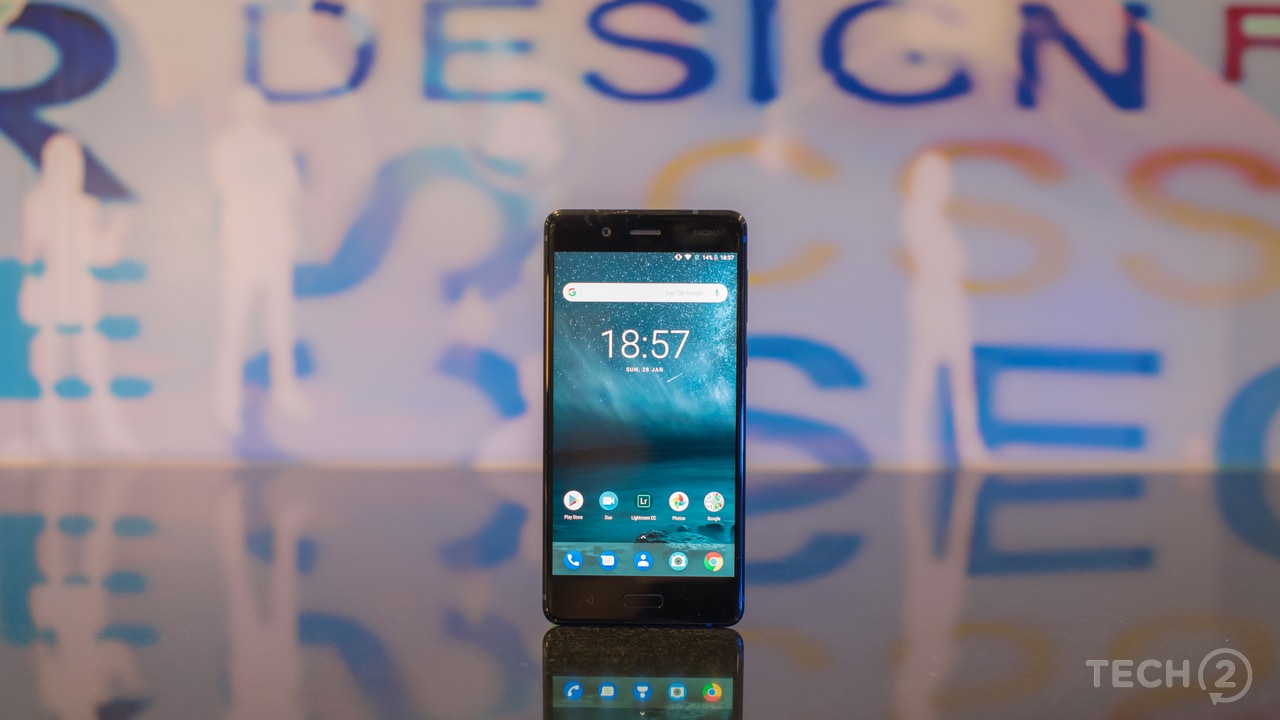 Image: Tech2/Rehan Hooda[/caption] If you look at competition in this price range —
**OnePlus 5T** ,
**Xiaomi Mi Mix 2** or
**Honor 8 Pro** — it onlty makes sense to go for the Nokia 8, if you are a hardcore Nokia fan. If you can, it’s best to wait for MWC 2018, which will most likely see the launch of the
**rumoured Nokia 9** otherwise go for any of the devices for its competitors in price range. All that said, I am looking forward to the next iteration of devices, likely to be revealed during Mobile World Congress (MWC) 2018 with hopes that HMD Global manages to launch something that can help Nokia as a brand to reclaim the mobile imaging industry.
Image: Tech2/Rehan Hooda[/caption] If you look at competition in this price range —
**OnePlus 5T** ,
**Xiaomi Mi Mix 2** or
**Honor 8 Pro** — it onlty makes sense to go for the Nokia 8, if you are a hardcore Nokia fan. If you can, it’s best to wait for MWC 2018, which will most likely see the launch of the
**rumoured Nokia 9** otherwise go for any of the devices for its competitors in price range. All that said, I am looking forward to the next iteration of devices, likely to be revealed during Mobile World Congress (MWC) 2018 with hopes that HMD Global manages to launch something that can help Nokia as a brand to reclaim the mobile imaging industry.


)
)
)
)
)
)
)
)
)



